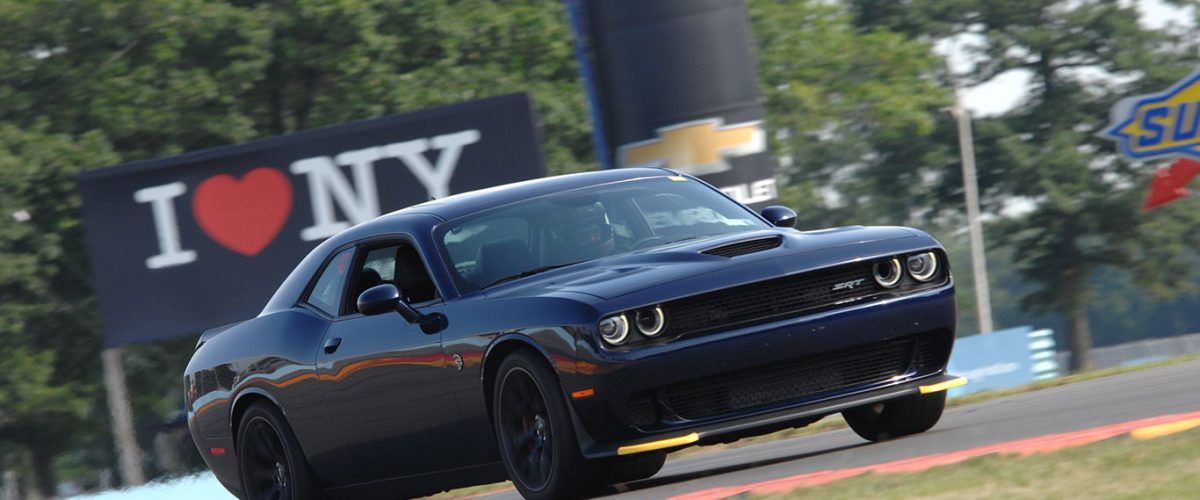Need for speedx
Driving at 150mph might not seem like an obvious way to unwind, but for Chief Information Officer Tony Cordeiro, it’s the perfect antidote to a busy life. The Reporter investigates.
“Some people visit a spa for relaxation, but I visit the racetrack to clear my mind,” explains Chief Information Officer Tony Cordeiro. “When you’re driving a high-performance car into a fast corner at high speed you can’t afford to be thinking about anything else, let alone how you’re going to organise an IT rollout.”
Tony’s passion for motorsport began in 2005 when he was invited to a track day by IBM. “My adrenaline was pumping so high – I still remember the presentation we received at lunch to this day!”
He says: “I grew up on the tiny island of Bermuda and only bought my first real car in 1997 when I moved to the United States, but the track day was a real eye opener and where I discovered my passion. It is important to continue to follow your passion.”
“We spent a lot of the day running laps and I soon realized that I not only enjoyed performance driving, but was also actually pretty good at it.”
Since then, Tony tries to arrange between three and five visits to race tracks each year. He races his 2016 Dodge Challenger SRT Hellcat, which is also his daily road car.
Tony says: “I’m a big fan of American muscle cars and the Hellcat is a 700 horsepower supercharged beast. It weighs 4,200lbs and is notoriously hard to handle, but that’s part of the challenge: to be able to master the handling of something that unwieldy.
“I also like that I’m racing the car I use every day, but obviously that means there’s an extra incentive not to push it too far.”
The fact that drivers own the cars they race means racing is controlled with the driver in front signalling to a faster car behind when it’s safe to overtake. The challenge comes from racing against the clock, trying to improve on personal best lap times in a variety of conditions including rain. This often means drivers are pushing their limits.
“The biggest scare I’ve had was when I was coming down a straight at around 120mph and lost my brakes heading into a set of ’S‘ curves, which is pretty much the last thing you ever want to happen,” says Tony. “The brakes were so hot that the brake lines expanded and lost pressure – no brakes!
“Thankfully the run-off area was all grass because rather than turning I just went straight on and eventually spun without hitting anything, which can be pretty frightening at 120mph.
“That’s one of the exciting and unpredictable aspects of motorsport – you learn quite a few of your lessons out on the track and have to think on your feet. That incident taught me the importance of pumping the brakes before the end of a straight, which is now second nature.”
Such skills also have an application in everyday driving, as Tony explains.
“What you learn from racing at speed is that cars are able to do three things (accelerate, brake and turn), but they aren’t designed to do any of them well, simultaneously. So, on the track, you learn to brake more intensely on the straight before you turn, so you don’t lose control of the car.”
The benefits of this were brought into clear focus for Tony when he was driving home with his family following a vacation.
He explains: “There was a big accident literally 20ft in front of us, but I knew the importance of braking hard first, pumping the brakes and slowing the car down before I tried to turn.
“Had I not known that, I could easily have flipped the car and we’d have ended up part of the wreck.”
Tony has also experienced the other extreme of motorsport during a drifting day where car control is frowned upon rather than admired.
He says: “I was visiting our Manila office in the Philippines a few years ago and stayed on for the weekend, so a few of us went to a drifting training day with the region’s drifting champion ‘Dr. Drift’ (see picture below).
“It’s the complete opposite of road racing and the whole aim is to get your car out of control right away.
“I was completely enamoured. It was one of the most fun things I’ve ever done. Smelling the rubber, hearing the tires screech and the engine revving was absolutely exhilarating. Experiencing that with my colleagues was an added bonus.”
“Anyone who turns up to a track-day with their own car needs little excuse to talk to someone about it, so there’s always plenty of conversation.”
Driving can often be a solitary sport, but it also has a social side.
“A few fellow CIOs share my love of high-performance driving and we sometimes meet up but, either way, anyone who turns up to a track-day with their own car needs little excuse to talk to someone about it, so there’s always plenty of conversation,” says Tony.
In terms of future ambitions, Tony is keen to improve on his own personal best, but says it is not his main inspiration behind racing.
“I’m competitive,” he says, “but my main reason for racing is mental decompression. To me that’s the whole objective. It’s getting the chance to not think about anything else for a couple of hours, so you are refreshed for when you do reconnect.”






So cool! Makes me miss the track though 🙁
Awesome article- who knew Tony was such a rad dude? :o)